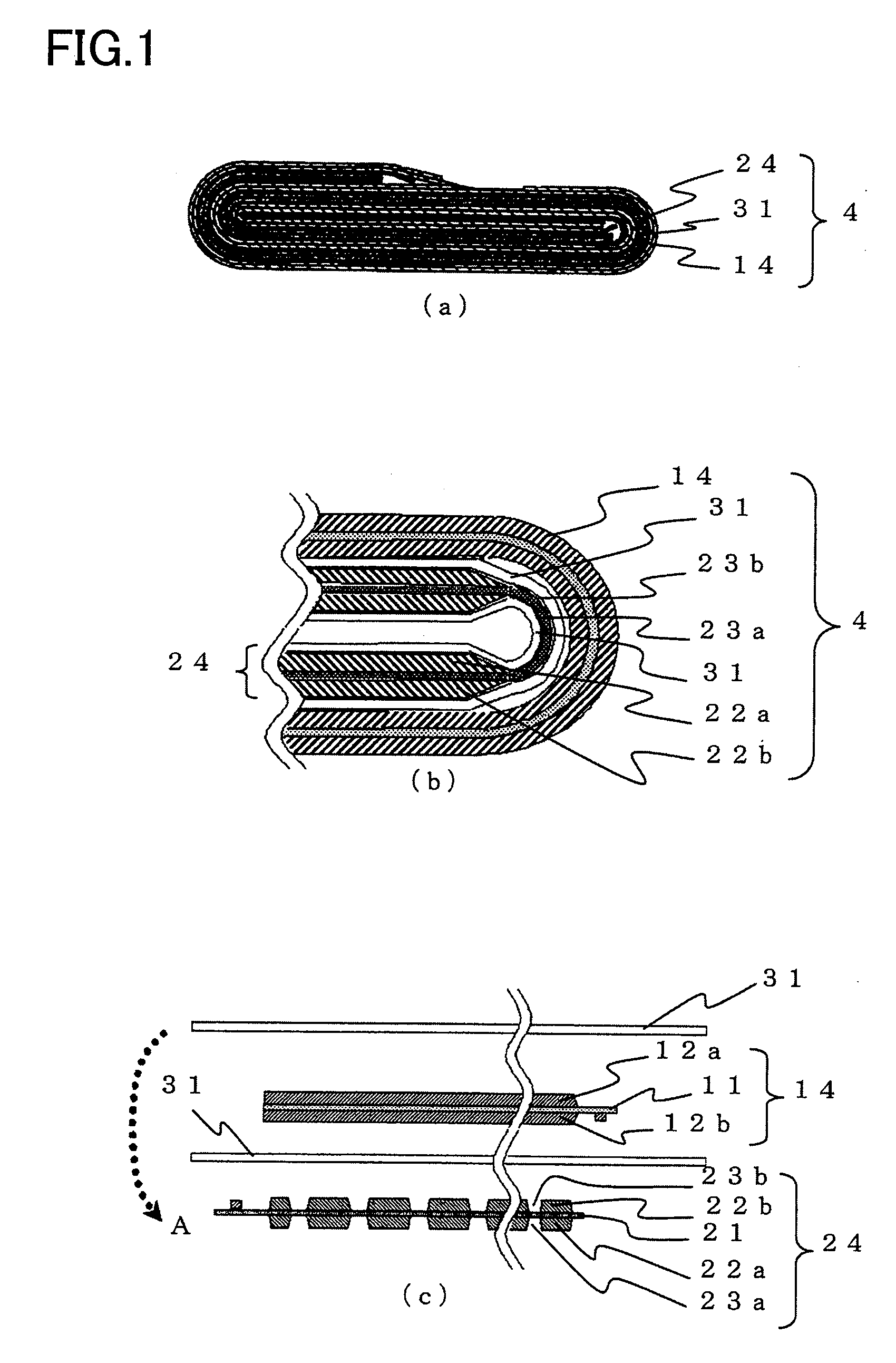Electrode group for secondary battery and secondary battery using the same
a secondary battery and electrode group technology, applied in the direction of wound/folded electrode electrodes, cell components, sustainable manufacturing/processing, etc., can solve the problems of internal short circuit between the positive electrode and the negative electrode, rapid temperature rise in the battery, and fractured electrode plates, etc., to achieve high reliability and safety, reduce fracture or buckling of electrode plates
- Summary
- Abstract
- Description
- Claims
- Application Information
AI Technical Summary
Benefits of technology
Problems solved by technology
Method used
Image
Examples
first embodiment
[0040]FIG. 1A is a cross-sectional view schematically illustrating a configuration of a secondary battery electrode group of a first embodiment of the present invention. FIG. 1B is a partially enlarged cross-sectional view illustrating a curved portion and its neighborhood located at an end portion in a major axis direction of the electrode group formed into a flat shape. FIG. 1C is a cross-sectional view illustrating a configuration of a positive electrode, a negative electrode, and a separator before forming the electrode group.
[0041]As illustrated in FIGS. 1A-1C, a positive electrode 14 having a positive electrode current collector 11 on which positive electrode mixture layers 12a, 12b are formed and a negative electrode 24 having a negative electrode current collector 21 on which negative electrode mixture layers 22a, 22b are formed are wound with a separator 31 interposed therebetween to form an electrode group 4 having a flat shape. In the curved portion located at the end por...
second embodiment
[0058]In the first embodiment, the uncoated portion where the mixture layer is not formed on the current collector is provided in the curved portion located at the end portion in the major axis direction of the flat electrode group to alleviate stress applied at the time of configuring the electrode group, or stress caused due to expansion / contraction of the electrode plates at the time of charge / discharge so that the advantage of reducing, for example, fracture of the electrode plate is obtained. Since a cylindrical electrode group also has a portion having a small radius of curvature at the start end of the winding of the electrode group, a similar advantage can be obtained by providing the relevant portion with an uncoated portion where a mixture layer is not formed.
[0059]FIG. 9A is a cross-sectional view schematically illustrating a configuration of a secondary battery electrode group of a second embodiment of the present invention. FIG. 9B is a partially enlarged cross-sectiona...
examples
[0073]The present invention will be described in detail below with reference to examples.
PUM
 Login to View More
Login to View More Abstract
Description
Claims
Application Information
 Login to View More
Login to View More - R&D
- Intellectual Property
- Life Sciences
- Materials
- Tech Scout
- Unparalleled Data Quality
- Higher Quality Content
- 60% Fewer Hallucinations
Browse by: Latest US Patents, China's latest patents, Technical Efficacy Thesaurus, Application Domain, Technology Topic, Popular Technical Reports.
© 2025 PatSnap. All rights reserved.Legal|Privacy policy|Modern Slavery Act Transparency Statement|Sitemap|About US| Contact US: help@patsnap.com



